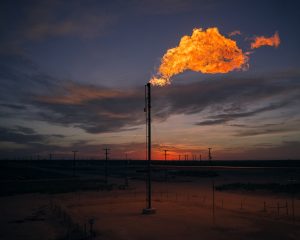A zero flaring policy is long overdue, and investors can help make it reality
 As investors take a hard look at the U.S. energy sector during this time of volatility, natural gas flaring is one of the most important and immediate risks to manage.
As investors take a hard look at the U.S. energy sector during this time of volatility, natural gas flaring is one of the most important and immediate risks to manage.
The eyesore of the oilfield, flaring natural gas destroys shareholder value and creates environmental, social and governance risk — exactly the kind of problem that an increasing number of asset managers, investment banks, and even private equity firms have promised to address.
Routine flaring is damaging the environment in several ways. In addition to the CO2 emissions from combusted gas, flares can release significant amounts of methane into the atmosphere. EDF’s recent helicopter survey found that more than one in every 10 flares at oil and gas sites across the Permian Basin was either unlit — venting uncombusted methane straight to the atmosphere — or only partially burning the gas they were releasing. In fact, the survey suggests that flaring could be among the region’s largest sources of fugitive methane and a troublesome contributor to local air pollution.
From a social standpoint, flaring is a costly unforced error. Royalty and mineral owners often don’t receive compensation for gas that is flared. Nor do states like Texas or New Mexico collect tax on flared gas, meaning revenue that could have gone to critical needs such as schools and roads is instead burned into thin air.
Flaring in Texas primarily falls under the jurisdiction of the Texas Railroad Commission, where the current rules and lax permitting practices effectively encourages these wasteful emissions. With no meaningful regulatory limits on how much methane companies can flare combined with a low-price gas market, operators have limited economic reason to do anything else.
A zero flaring policy is long overdue, and investors can help make it reality Share on XAs a result, operators in the Lone Star State have burned nearly 1 trillion cubic feet of natural gas since 2013. Just last year, Permian operators flared over $400 million worth of this natural resource.
Flaring intensity reductions already achieved by some operators
Flaring is an egregious and pervasive ESG problem. Fortunately, routine flaring is a solvable problem using technologies and management practices that already exist. But investors looking to separate oilfield leaders from laggards should know that some operators are doing a far better job than others of addressing flaring.
Chevron, Pioneer, Occidental and Parsley are among producers who have taken proactive measures such as infrastructure planning and operational changes to greatly reduce routine flaring from their operations. These firms report achieving flaring intensities as low as 1%, often as the result of multi-year flaring reduction initiatives with documented year-over-year performance improvement.
Cutting out routine flaring means more gas used with economic and social benefit, and less chance for unlit or poorly functioning flares that emit potent methane into the atmosphere.
Unfortunately, in the fragmented domestic oil and gas industry, this high level of performance is far from widespread. Prior to the current downturn, flaring intensity in the Permian Basin was 5%, with some sizable operators flaring as much as 20% or even 65% of their gas.
Yes, during this epic slowdown, Permian flaring is most likely decreasing as fewer wells are being drilled and production is shut in. But as commodity prices recover and production accelerates, there is little reason to believe flaring won’t snap right back up.
End routine flaring in Texas by 2025
So where do we go from here? We know that routine flaring can be eliminated, but years of experience with ESG issues in the oil patch demonstrate beyond a doubt that voluntary efforts do not get the job done industry wide.
That’s why government leaders have an essential role to play in learning from the industry’s best efforts and instituting policies to get the problem under control. For example, the Texas Railroad Commission could formally adopt the goal of ending routine flaring in Texas by 2025 and instruct staff to develop recommendations to meet that goal.
Ending routine flaring in Texas by 2025 would be an ESG win at a time when the industry needs one, with investor confidence declining and the energy transition coming fast.
Groups like the industry’s Oil and Gas Climate Initiative have stated support for eliminating routine flaring globally by 2030, including in geographies with less advanced infrastructure and less developed oil and gas regulatory capacity. OGCI, which includes prominent members active in the Permian Basin, such as BP, Chevron, ExxonMobil, Occidental and Shell, should support zero routine flaring by 2025 in Texas.
While many investors have recently exited the sector due to ESG concerns, poor returns, or both, we encourage the investors who stay engaged to support a more responsible, lower emitting industry — one that builds back smarter after the economic crisis. Ramping up corporate engagement on methane and flaring while advocating government policies to end routine flaring by 2025 is an actionable place to start.










